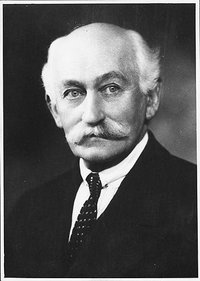Henry Balfour
Contents
Notes
Office Notes
AI Council 1891 Member
AI Council 1892 Member
AI Council 1893 Member
AI Council 1894 Member
AI Council 1895 Member
AI Council 1896 Member
AI Council 1897 Vice President
AI Council 1898 Vice President
AI Council 1899 Vice President
AI Council 1900 Member
AI Council 1901 Member
AI Council 1902 Member
AI Council 1903 President
AI Council 1904 President
AI Council 1912-13 Vice President (pp)
House Notes
Corresp. member Anthrop. Socs Paris, Florence and Rome
1921 HML The archer’s bow in the Homeric poems: an attempted diagnosis
A70/7/67 ‘Mr Balfour presented to this Institute a portrait of the late Lieut. Gen. Pitt-Rivers…’; AI Council minutes, 27 Nov. 1900, f. 22
Notes From Elsewhere
Henry Balfour FRS[1] (11 April 1863 Croydon – 9 February 1939) was a British archaeologist, and the first curator of the Pitt Rivers Museum.
He was President of the Royal Anthropological Institute, the Museums Association, the Folklore Society, the Royal Geographical Society, and a Fellow of the Royal Society.[2]
Born in Croydon; died Oxford.
Curator, Pitt Rivers Museum.
Research Fellow, Exeter College. Titular Professor.
Publications
External Publications
Although he only wrote one book, The Evolution of Decorative Art (1893), Balfour published numerous scholarly articles, often taking a specific type of object – from musical bows to fire-pistons or fishing-kites – and exploring its "evolutionary development" through history and across different cultures
House Publications
Stringed-wind instrument of Bushmen and Hottentots: the goura 1902
Pres, Address: relation of museumms to anthropology 1904
Pres. Address 1905
Implements of palaeolithic type from Zambesi 1906
Friction drum 1907
Modern brass-cutting in W. Africa 1910
Frictional fire making with a thong 1914
Origin of stencilling in Fiji 1924
Related Material Details
RAI Material
a few photos, and portraits
A94/2/19 obit. and a Bafour memorial Journal number by T.K. Penniman
Other Material
papers in PRM
Corresp with JLM in Bodleian
PRM field collector
